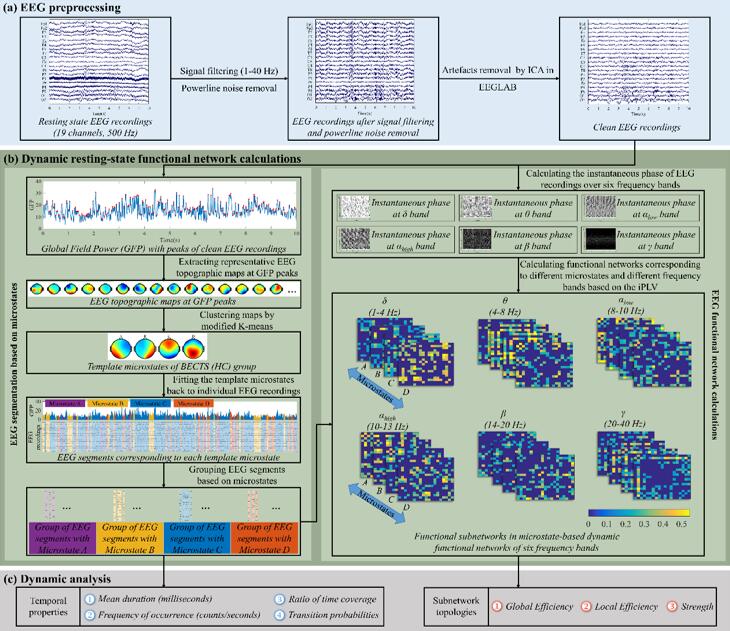Epilepsy is a serious neurological disease. More than 50% patients have the onset during childhood. Effective treatment of epilepsy can avoid serious long-term effects such as brain dysfunction. Recent study has shown that epilepsy is a brain network disease. Construction of epilepsy networks is therefore of great significance to the mechanism research and clinical diagnosis and treatment of epilepsy.
Researchers with the Suzhou Institute of Biomedical Engineering and Technology (SIBET) of the Chinese Academy of Sciences recently proposed a whole-brain dynamic resting-state functional network (DFN) computation method to better construct epilepsy brain networks.
The method is based on resting-state low-density EEG recordings in scalp space.
At present, fMRI and EEG are commonly used to construct the epilepsy brain networks. EEG is non-invasive, wearable, cost-effective, and especially suitable for children's brain function monitoring.
Benign epilepsy with centrotemporal spikes (BECTS) is the most common type of epilepsy among children. Both fMRI and EEG source imaging (ESI) studies have indicated that BECTS is associated with static resting-state functional network (SFN) alterations (e.g., decreased global efficiency) in source space.
However, the abovementioned alterations are not significant when the SFN calculations are performed in the scalp space using only clinical routine low-density (e.g., 19 channels) EEG recordings.
Based on the concept of EEG microstates, LIU Yan and his colleagues from DAI Yakang’s group from SIBET proposed the DFN computation method.
"The method helps better analyze the dynamic properties of the whole-brain functional states, and on the other hand, realizes the display of the functional subnetworks’ topologies in each microstate,” said LIU.
The experiment was performed on the EEG recordings of BECTS and healthy subjects collected at the Children’s Hospital of Soochow University.
Results show that proposed DFN can reveal significant differences between individuals with BECTS and healthy controls, with lower global efficiency in Microstate C - β frequency band. This makes it superior to traditional SFNs, and matching traditional fMRI and ESI methods in the source space.
The findings suggest that BECTS patients’ networks have poorer integration capabilities than healthy subjects’ networks.
Also, the new method directly performs DFN computations from clinical routine low-density EEG recordings and avoids complex ESI computations, making it promising for clinical applications, especially in the outpatient diagnosis stage.
In addition, this method may be applied to explore the mechanism of other brain diseases and assist clinical diagnosis and treatment.
The article "Whole-Brain Dynamic Resting-State Functional Network Analysis in Benign Epilepsy with Centrotemporal Spikes" was published in IEEE Journal of Biomedical and Health Informatics.

Fig. 1. The pipeline of the proposed dynamic resting-state functional networks analysis method. (Image by SIBET)
Contact
XIAO Xintong
Suzhou Institute of Biomedical Engineering and Technology, Chinese Academy of Sciences (http://www.sibet.cas.cn/)
Phone: 86-512-69588013
E-mail: xiaoxt@sibet.ac.cn